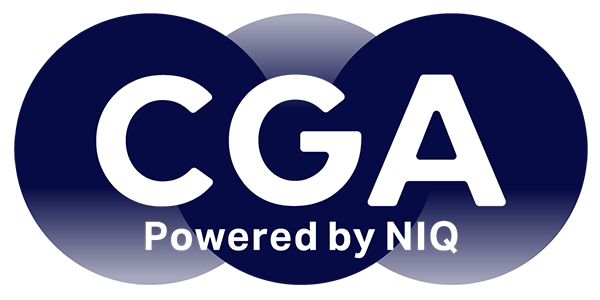However, this steady performance conceals a significant divergence of habits—between those ready to spend and those who are keeping a close eye on their cash. This has polarized drinks choices, with 16% of consumers purchasing more premium drinks than they did in 2024, but 13% buying more value options. This split creates opportunities for suppliers, bars and restaurants to capture fresh sales at both ends of the spectrum, and to satisfy guests with offerings to match their willingness to spend.
What motivates premium-spenders and value-seekers
By Mitch Stefani, Director – On Premise | Originally published in Restaurant & Foodservice News
Despite pressure on spending, demand for premium categories and brands remains strong. Nearly half (47%) of consumers say they are likely or very likely to pay extra for a better quality drink, and interest is twice as high among those aged 19 to 34 (60%) and 35 to 54 (58%) as it is in the 55+ age group. This is a reminder of the very active engagement of younger adults, as well as the need to diversify offerings to accommodate different consumers groups, creating appeal among all visitors. So, what is driving premium spend for those that are doing so? NIQ’s research shows there is no single reason but a multitude of factors. One is the spending power of younger adults, as 19- to 34-year-olds are nearly twice as likely as average to be buying more premium drinks than they were a year ago. Another is the desire for self-rewards, with well over half (58%) of consumers choosing luxury drinks when they go out as a way to treat themselves.
A third is widespread interest in experimentation. One in three (33%) consumers—and 58% of 19- to 34-year-olds—have tried a new drink when out over the past month, and trial can lead them towards premium brands. Other factors at play include the suitability of premium drinks for the type of occasions people have been visiting for (31%), and the increased frequency of visits to bars and restaurants (30%). While these premiumizing consumers are vital, it’s also important to understand the motivations of people seeking value. What distinguishes these two is that while premium spending is driven by several factors, value-based spending mostly boils down to financial reasons. Over half (56%) of those buying more value drinks than they were a year ago say it is because they have less disposable income, making it the top factor by some distance. Meanwhile, more than a quarter (27%) are doing so because it means they can afford more serves per visit, while 37% think they get better value for money than they do from premium brands.

Ways to reach the premiumizers
How can Canadian brand owners and venues best reach the high-value fans of premium? In an ultra-competitive market, it’s not easy, but NIQ’s research highlights some of the best levers to pull. It starts with an understanding of precisely what premium means. Consumers interpret it in various ways when they consider drinks, but the most common association is with the quality of ingredients used (55%), followed by the uniqueness of the drink to a venue (37%) and its expert preparation (31%). These are some of the most effective messages to stress in any brand communications. Local production can also have close connotations with high quality, with NIQ data highlighting Canadians’ eagerness to support nearby businesses.
It’s also important to appreciate the categories where consumers are trading up, and the venues in which they’re doing so. Spirits are in a unique position to capitalize, as two in five (41%) of those seeking to treat themselves to a premium drink will typically look to different category, which opens up potential to attract people away from their usual choices in beer or wine. This is particularly the case in fine dining restaurants, the venues in which consumers are most likely to choose premium drinks.
Premiumizing factors vary from category to category. In spirits and cocktails, the quality of ingredients and the extra touches that people can’t replicate for themselves are most likely to encourage people to trade up, alongside signature serves and flavour twists. These and other factors point to the need to prove to consumers that the drinks and experiences they receive in bars and restaurants are superior to anything they could get at home. In beer, meanwhile, larger serve sizes, brand familiarity and new styles can encourage drinkers to pay more. And in wine, the country of origin and suitability with food are more important. In all these categories, bar staff have a major role to play. Nearly half (48%) of consumers ask staff for drink recommendations at least occasionally, and 92% are satisfied with the results. With three in ten (30%) of those choosing premium drinks influenced by recommendations, teams can be a powerful driver of trade-ups. This makes bartender advocacy programmes a very good route to connect to consumers and drive brand discovery and satisfaction.
The top takeaway
The size of the prize in premium is clear. On average, consumers are willing to spend around 15% more for a better quality drink in Canada’s On Premise, which can result in extra spend for brands aiming to stay competitive. Adapting to consumers’ demands and giving them compelling reasons to trade up—without neglecting the needs of people seeking value options—will be a key part of success in 2026 and beyond.
Data is sourced from CGA by NIQ’s August 2025 Canada On Premise Pulse Report.
Unlock premium potential in Canada’s polarized beverage market
Consumer spending may be split, but the opportunity to drive premium trade-ups is stronger than ever. NIQ’s On Premise insights reveal what motivates value-seekers and premium spenders—and how to reach both.



